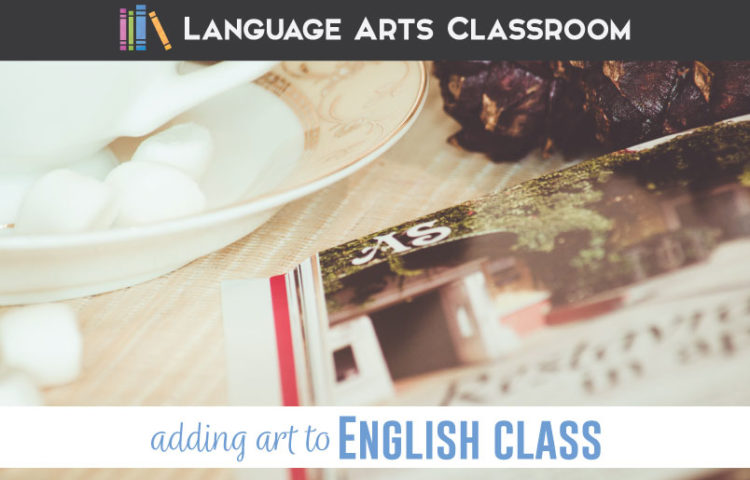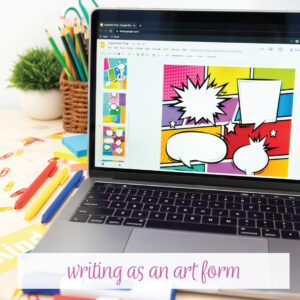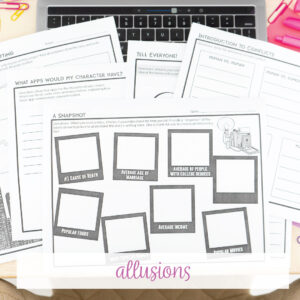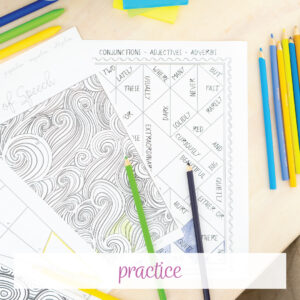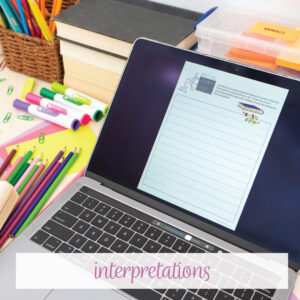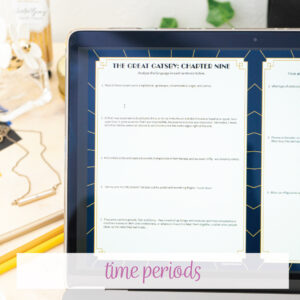Putting art in English class.
Last year, my husband and I purchased a picture from a local art show. It’s a color image of a typewriter on wood.
Guests ask about the artwork. What made us buy it? Does the typewriter signify a larger idea? Did we buy it because we are both writers?
We’ve failed all of our guests: We simply liked the picture, and we liked that it was on wood. We can’t exactly place why.
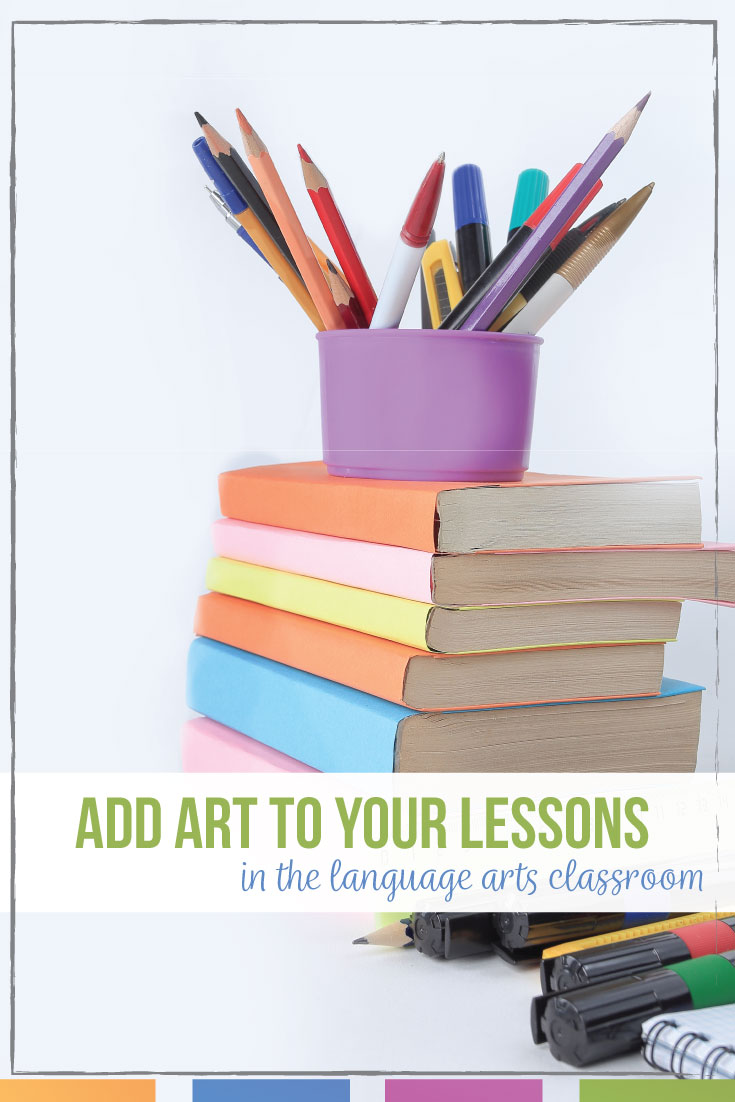
Art is subjective, and different forms reach different students. That reach, that connection with art, can greatly add to an ELA curriculum. Previously, I have purposefully added pictures to ELA lessons. and I continue to experiment for more opportunities. We can provide opportunities for students to explore vocabulary, writing, grammar, and literature when we add art in English class.
Just as my husband and I aren’t sure why we like our typewriter picture, our students might not pinpoint what artistic elements will help them grow in our classes. We can, however, encourage art in class. Here are five ways.
Acknowledge that writing is an art form.
The entire writing process has an artistic slant. Just as a painter must prepare to paint or mold, a writer must brainstorm ideas and methods for explaining their thoughts. Writers and artists alike must consider the message and audience. When I write with students, I emphasize that they are the masters of their papers, they are the creators behind this message they want to share.
Choosing the correct word, the perfect metaphor, and the exact phrasing takes work. Similarly, assigning character traits, creating a believable antagonist, and intertwining a theme through a narrative is a herculean task. I classify all of those as artistic endeavors. Molding, chiseling, and shaping are all words that could describe pottery, but I also use those words to describe writing a paper.
Highlight allusions.
Allusions in literature shape the character and establish the time period. For instance in A Raisin in the Sun, Hansberry alludes to the beautiful Pearl Bailey to describe Ruth’s beauty. Pull up Bailey’s songs to illustrate the deeper meaning.
Listen for common allusions, too. “Scrooge” is an allusion to A Christmas Carol, and our culture uses that term to describe a miserly person. Mention that to students! It is important that students see allusions from literature become part of our vernacular. (Language is also artistic!)
Practice with art.
We can provide options like creating a graphic novel page or interpretive color analysis of a character, but art in English class can also be small gestures.
When discussing literature, the options for student expression are endless. Adding sticky notes or listening to music are all ways to practice with art.
Sometimes, I ask students to draw a picture alongside their writing assignment. Then, I ask students to add details to their writing. Art inspires writing! Students then have another tool for brainstorming and making the writing process meaningful to themselves.
Note sheets allow students to doodle, to add details, to think of examples, and write definitions. I often consider the finished note sheets a work of art! Many times, students add colors for symbolization.
With grammar lessons, I include color by grammar in station rotations or as differentiated practice. Sometimes, students come to be scared of grammar, and adding a comforting element helps that feeling subside.
Interpret interpretations.
Textbooks, book covers, and graphic novels very purposefully use colors, fonts, and images. These art pieces lead to strong discussions as anticipatory activities. All sorts of people interpret literature—designers, bloggers, reviewers, producers, photographers, and on. Use art about the story to engage students.
If a book has been made into a movie, that is another piece of art! Connect those notions for students so that they begin to realize that art has many different forms and interpretations. As a bonus, show the movie poster and ponder the interpretation of characters and setting.
Connect art to time periods.
Your literature might not have many allusions. To help students understand the setting, show them famous artistic pieces, popular architecture, and famous music from the time period.
For instance when I teach different movements such as modernism and postmodernism, I purposefully include art in my lessons. We discuss:
- Why would people appreciate that art form during this time period?
- In what ways does the art align to what we know of the features of the time period?
- Did that art form contribute to the defining features of the time period?
Incorporating art can be done large-scale with artistic assignments, but smaller gestures can be made as well. Students see the beauty of language arts when we incorporate small pieces into class. You can also pull descriptions of art from the story. For example, The Great Gatsby has vivid descriptions of architecture and art.
I might never know the deeper meaning of why my husband and I purchased the typewriter piece. I can’t pinpoint why I enjoy the image either. Whenever I really look at it or dust it or talk with guests about it, I’m happy. I want my students to feel the same in my class. Art in English class provides ample opportunities for students to explore literature, take notes, and find meaning. Spruce up ELA classes with art.
Need more ways to add art to an English class? Melissa has you covered!

